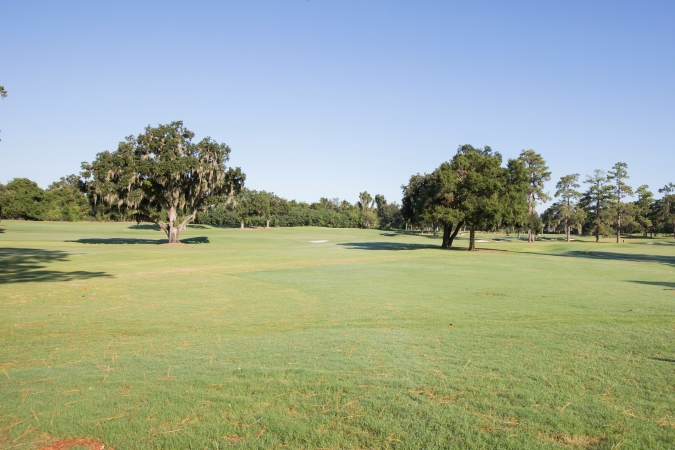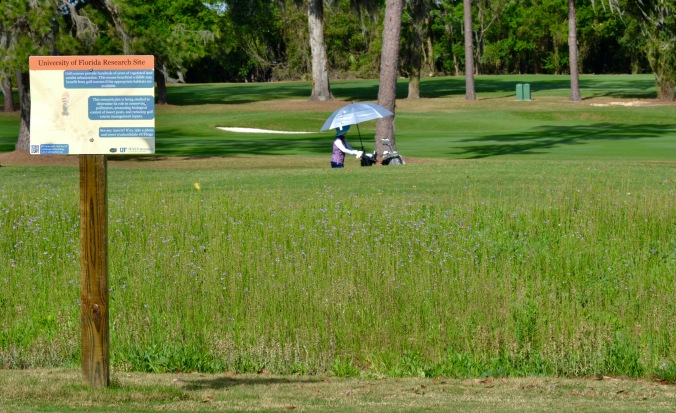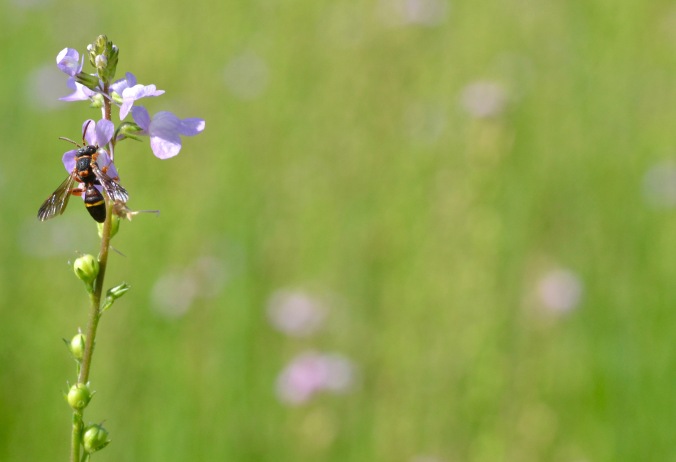Green spaces like parks, golf courses and residential lawns occur throughout urban landscapes and can offer a multitude of conservation and human health benefits. Golf courses provide hundreds of acres of continuously vegetated land amidst urban areas. The majority of land on golf courses is out-of-play or underutilized by golfers; however, this land is often irrigated and/or highly maintained. As urbanization and human population growth progress, water and wildlife conservation are increasingly important. Golf courses provide opportunities to create habitats that provide aesthetic and environmental benefits and cut back on the monetary and environmental costs of management. My goal is to help superintendents understand the costs and benefits associated with these habitats so that they can do what is most appropriate for their course.
With the largest golf industry in the U.S., Florida is saturated with opportunities to demonstrate the ecological benefits that golf courses can provide. I am interested in the role golf courses play in the ecology of insects in urban landscapes at the local and landscape scale. I hope to provide superintendents with the tools and knowledge to enhance their golf courses and the industry. My lab has 3 primary areas of interest:
- How can under-utilized areas of golf courses be converted from managed turfgrass to functional habitats that require less water, pesticides, and maintenance?
- How can alternative habitats provide insect pest management and conservation services on golf courses?
- How does geographic location and surrounding habitat type affect what insects live on and utilize golf courses, and how can we use this information to inform management decisions?
Recent Publications:
Krebs CL*, Warner LA, Baker LM, Daniels JC, Dale AG. 2022. Innovative Industry: Environmental horticulture professionals’ perceptions on wildlife-friendly plants and a potential certification offering. Journal of Applied Communications. Vol. 106: Iss. 3. https://doi.org/10.4148/1051-0834.2413
Nestle R*, Cope GC, Benda ND, Dale AG. 2021. Creating wildflower habitats in golf course out-of-play areas. UF IFAS EDIS #ENY2059. https://edis.ifas.ufl.edu/in1316
Nestle R*, Daniels JC, Dale AG. 2020. Mixed-species gardens increase monarch oviposition without increasing top-down predation. Insects. 11(9), 648; https://doi.org/10.3390/insects11090648 [LINK]
Dale AG, Perry RL*, Cope GC(§), Benda N(¥). 2020. Floral abundance and richness drive beneficial arthropod conservation and biological control on golf courses. Urban Ecosystems. 23(1), 55-66. https://doi.org/10.1007/s11252-019-00907-0

Underutilized, but maintained, out-of-play turfgrass on golf courses may have potential to provide other functions. (PHOTO – BEFORE) Credit: Tyler Jones, UF/IFAS Communications

Converting out-of-play turfgrass to floral habitats may conserve pollinators, promote natural pest control, and reduce maintenance inputs. (PHOTO – AFTER) Credit: Tyler Jones, UF/IFAS Communications

Wildflower plot adjacent to fairways and tee box began flowering in early March 2017 – Photo: A.G. Dale


These plots are attractive to pollinating and predatory insects, conserving wildlife that provide multiple services.